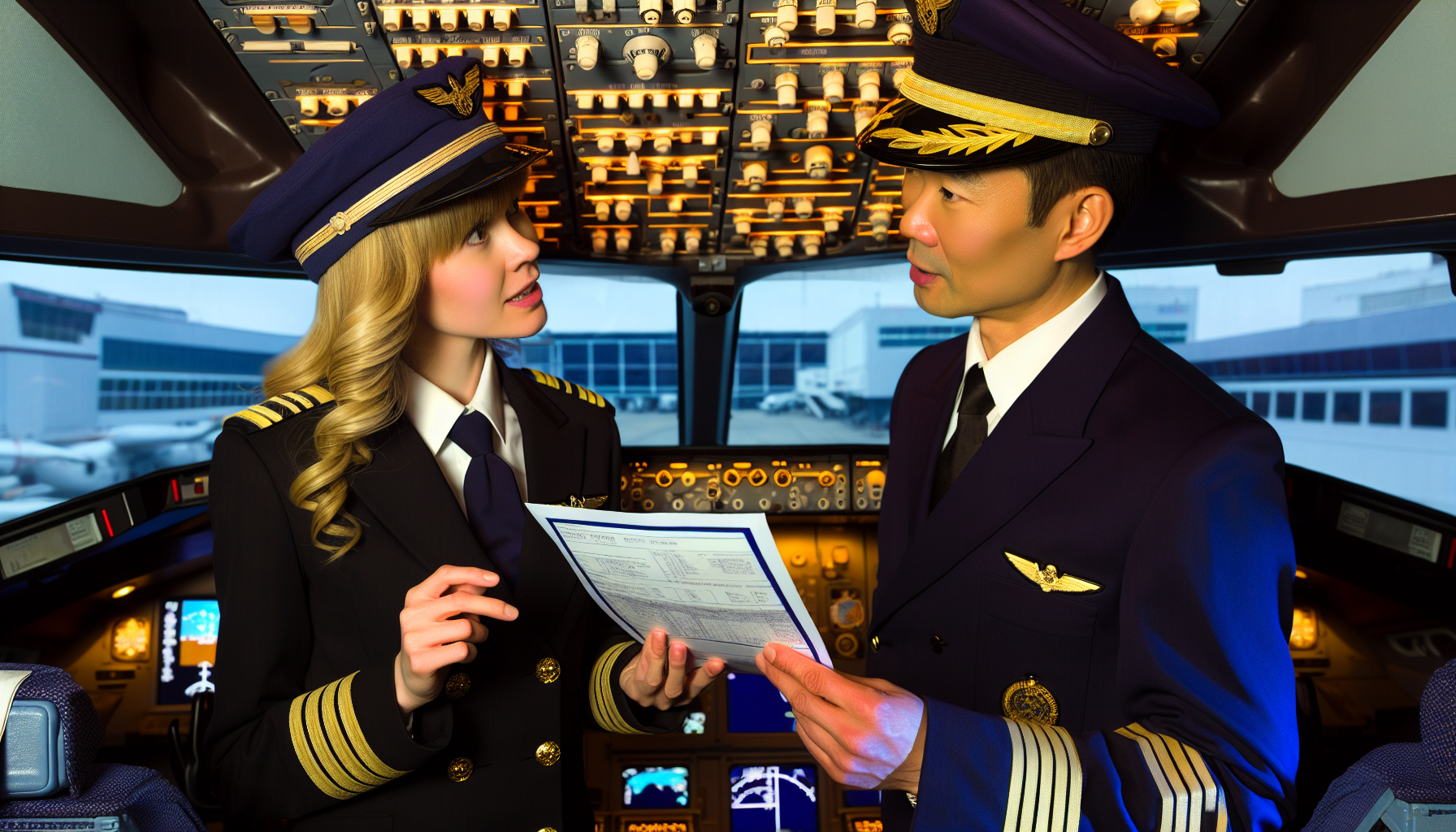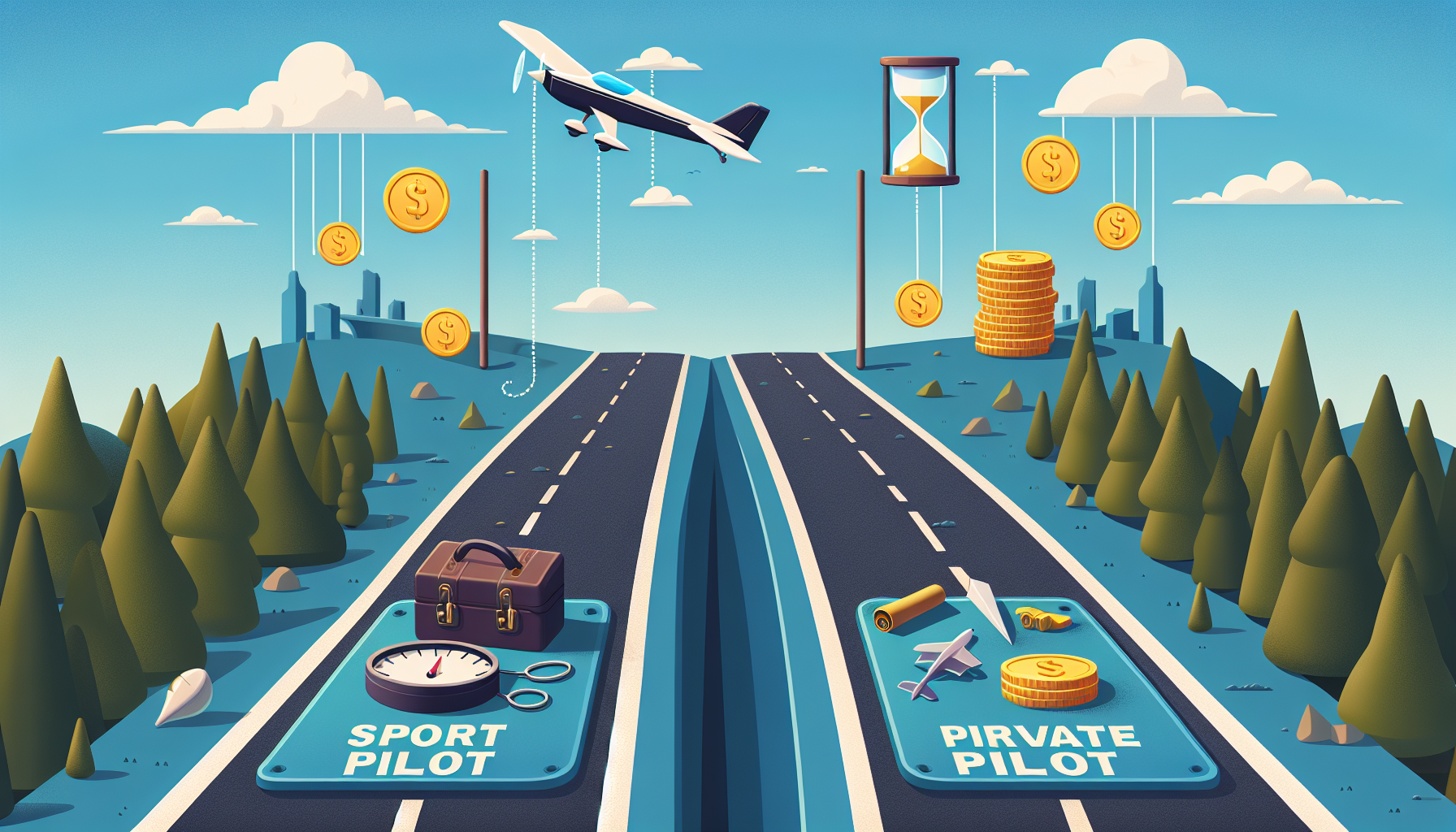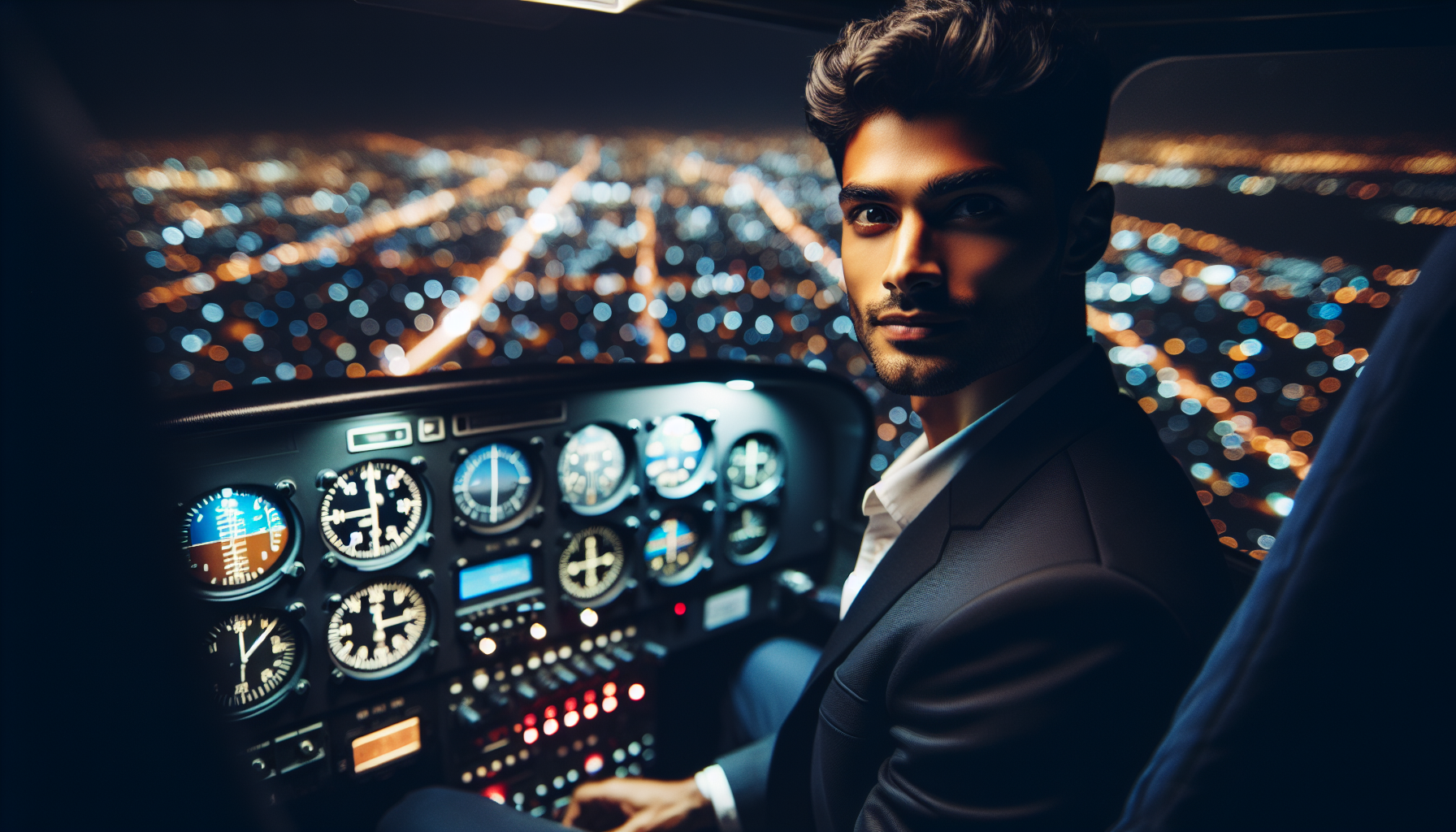Sport License vs Private Pilot: Key Differences Explained
Feb 01, 2024
Imagine soaring high above the earth, free as a bird, and experiencing the unparalleled thrill of flight. For many, this dream can become a reality by obtaining a pilot’s license.
But with different types of licenses available, how do you decide which one is right for you? This blog post will guide you through a clear comparison of sport license vs private pilot certifications, exploring their differences, costs, requirements, and privileges.
Key Takeaways
-
Comparing how to get Sport Pilot and Private Pilot Certifications involves evaluating factors such as training requirements, aircraft options, flight privileges & medical requirements.
-
Training expenses for a Sport or Private License range from $5K - $20K with the former taking 2-3 months while the latter takes 4-6 months.
-
Pilots have access to advancement opportunities including upgrading their license or obtaining a Recreational Pilot License estimated at around $15-$20K and/or costing between$6-$7k respectively.
Understanding the Differences

Generally, aspiring pilots have two main options: obtain a Sport Pilot License or a Private Pilot License. While both licenses allow you to take to the skies, they differ in terms of training requirements, aircraft options, flight privileges, and medical requirements.
The Sport Pilot License caters to individuals seeking to fly for leisure and recreational purposes, and it comes with certain limitations compared to a Private Pilot License, such as fewer aircraft options and reduced access to certain airspace. On the other hand, a Private Pilot License is the least restrictive of the two and offers greater aircraft and flight privileges, but it also requires more extensive training and higher costs.
Sport Pilot License
A Sport Pilot License, or sport pilot certificate, is perfect for individuals who want to experience the joy of flying without the more rigorous training and requirements of a Private Pilot License.
With a Sport Pilot License, sport pilot certificate holders can operate light sport aircraft for recreational purposes, making it an ideal choice for those looking to take to the skies as a hobby. Additionally, obtaining sport pilot certificates is a more accessible option for aspiring pilots, serving as a stepping stone before acquiring a student pilot certificate.
One significant advantage of a Sport Pilot certificate is its potential to save money and time in comparison to a Private Pilot License. Since the Sport Pilot License has fewer requirements, you can expect to spend less time and money on training, making it a more accessible option for many aspiring pilots.
Private Pilot License
In contrast to the Sport Pilot License, a Private Pilot License allows pilots to fly for both personal and business purposes. This type of license requires more comprehensive training and a medical examination, but it grants more aircraft and flight privileges than a Sport Pilot License.
With a Private Pilot License, you can operate a wider variety of aircraft, including multi-engine airplanes and jets. Additionally, private pilots can fly at night and in instrument meteorological conditions (IMC), which are not possible with a Sport Pilot License.
This makes the Private Pilot License a more versatile choice for those who want expanded flying capabilities and opportunities for advancement.
Analyzing Costs and Time Commitments

When choosing between a Sport Pilot License and a Private Pilot License, it’s important to evaluate the costs and time commitments required for each certification. Generally, obtaining a Sport Pilot License can be up to 50% cheaper than a Private Pilot License.
This is due to the reduced training hours and less stringent requirements for the Sport Pilot certification.
However, the costs of obtaining a Private Pilot License can vary greatly depending on factors such as:
-
Geography
-
Flight hours
-
Type of aircraft
-
Fuel prices
-
The flight school you choose
Ultimately, it’s important to weigh the cost and time differences against the benefits and privileges offered by each license type when making your decision.
Training Expenses
When budgeting for your pilot’s license, it’s important to consider the various expenses associated with both Sport Pilot and Private Pilot training. The cost of obtaining a Sport Pilot License can range from $5,000 to $10,000, which is approximately half the cost of a Private Pilot License.
On the other hand, expenses associated with acquiring a Private Pilot License may vary from $6,000 to $20,000 or more, depending on the flight school and location. Additionally, there may be supplementary costs for written examinations and practical tests for both licenses. Medical exams for each license type also come with their own costs, typically ranging from $75 to $180, depending on the medical examiner.
Duration of Training
Another important factor to consider when choosing between a Sport Pilot License and a Private Pilot License is the duration of training required for each. Flight training for a Private Pilot Certificate typically takes 4-6 months, whereas flight training for a Light Sport Aircraft Certificate can be completed in 2-3 months.
The minimum number of flight training hours mandated for a Sport Pilot License is 20 hours, while a Private Pilot License requires at least 40 hours according to Part 61 flight school regulations.
However, it’s worth noting that most pilots take approximately 60-80 hours to complete the training for a Private Pilot License.
This difference in training duration can be a deciding factor for those who want to get in the air as quickly as possible.
Medical and Eligibility Requirements
Before starting your journey to become a pilot, understanding the medical and eligibility requirements for both Sport Pilot and Private Pilot licenses is important. Different licenses have varying requirements, which can impact your ability to obtain the certification you desire.
Sport Pilot Medical Requirements
One of the key differences between Sport Pilot and Private Pilot Licenses is the medical requirements. For a Sport Pilot License, a driver’s license is accepted as sufficient medical proof, and a medical exam is not required. However, certain health conditions may preclude someone from obtaining a Sport Pilot License, such as coronary heart disease, high blood pressure, and mental health conditions, among others.
It’s important to note that pilots who have been denied FAA medical certification are not permitted to fly under Sport Pilot rules unless they first obtain FAA medical approval. Additionally, the vision requirements for a Sport Pilot License necessitate having intermediate vision of 20/40 or better in each eye individually, with or without correction.
Private Pilot Medical Requirements
In contrast, the medical requirements for a Private Pilot License are more stringent. Private pilots must have 20/20 vision with or without corrective lenses and adhere to mental and neurological standards.
The cost of a medical exam for a Private Pilot License can range from $75 to $180, depending on the medical examiner.
It’s possible for individuals with disabilities to acquire a Private Pilot License, but they may need to consult with an aviation medical examiner to determine if their specific medical condition will impact their eligibility.
This highlights the importance of understanding the medical requirements for each license type before embarking on your pilot training journey.
Aircraft and Flight Privileges

When comparing Sport Pilot and Private Pilot licenses, considering the aircraft and flight privileges each certification offers is important. Sport pilots are limited to one passenger and lighter aircraft, while private pilots enjoy more aircraft options and fewer restrictions on their flight privileges.
Knowing the aircraft and flight privileges each license type offers can assist you in choosing the certification that best aligns with your pilot career goals and aspirations.
Light Sport Aircraft
Sport Pilots are restricted to flying Light Sport Aircraft (LSA), which are designed for recreational and sport flying purposes. LSAs have a maximum weight of 1,320 pounds and a cruising speed of up to 120 knots, making them ideal for leisurely flights and shorter trips.
Some common models of Light Sport Aircraft include:
-
Evektor Harmony
-
Bristell NG 5
-
Spirit
-
Aeronca 11AC
-
Aeronca 11BC
-
Piper J-2 and J-3
These models are perfect for those looking to fly light sport aircraft, as they offer a great balance of performance and ease of use.
These aircraft typically feature the requisite instruments for VFR day flight as specified by the FAA and are designed to be lighter and more affordable than other types of aircraft, making them ideal for a solo flight.
Aircraft Options for Private Pilots
In contrast, Private Pilots have access to a more extensive selection of aircraft, including single-engine and twin-engine piston airplanes, as well as multi-engine planes within their certification. These aircraft options provide private pilots with greater capacity, speed, and range, making them suitable for a variety of flight operations.
When selecting an aircraft, private pilots should consider their individual needs, budget, and flying requirements. The wide range of aircraft options available to Private Pilots allows for more versatility and adaptability when it comes to achieving their flying goals.
Navigating Airspace and Night Flying

A key aspect to consider when comparing Sport Pilot and Private Pilot licenses is the divergence in airspace access and night flying privileges. Knowing the limitations and permissions that come with each license type is key to ensuring safe and compliant flight operations.
Airspace Access for Sport Pilots
Sport Pilots have limited airspace access compared to Private Pilots. They are only permitted to fly in certain types of airspace, such as Class E and G airspace, and are generally not authorized to fly in controlled airspace, such as Class B, C, and D airspace, without additional training and endorsements.
It is important for Sport Pilots to be aware of these airspace restrictions and obtain the necessary training and permissions before attempting to access controlled airspace. This can help ensure safe operations and minimize the risk of airspace violations.
Night Flying and Airspace Access for Private Pilots
In contrast, Private Pilots enjoy greater airspace access and night flying privileges compared to Sport Pilots. Private Pilots can operate in both controlled and uncontrolled airspace, although they may require clearance or authorization from air traffic control before entering controlled airspace.
Private Pilots are also allowed to fly at night, provided they have completed the necessary night flying training with a flight instructor. This expanded set of privileges enables Private Pilots to undertake flights that may not be possible for Sport Pilots, such as flying during the night or in instrument meteorological conditions (IMC). Student pilots, on the other hand, have limitations in their flight privileges until they obtain higher certifications.
Advancement Opportunities
Once you’ve secured your pilot’s license, abundant opportunities for further progression and development open up. Upgrading from a Sport Pilot License to a Private Pilot License or obtaining a Recreational Pilot License are just a few options available to pilots looking to expand their skills and capabilities.
Upgrading from Sport Pilot to Private Pilot
If you currently hold a Sport Pilot License and wish to upgrade to a Private Pilot License, you’ll need to:
-
Complete additional training
-
Meet specific eligibility criteria
-
Log additional flight hours
-
Obtain the necessary endorsements in your logbook
-
Acquire a current FAA Medical Certificate (third class or higher)
The cost of advancing from a Sport Pilot License to a Private Pilot License is estimated to be approximately $5,000 to $10,000, although the hours and training completed as a Sport Pilot can be applied towards the requirements for the Private Pilot License.
Recreational Pilot License: Another Option
Another option for pilots looking to further their abilities is obtaining a recreational pilot certificate, also known as a Recreational Pilot License. This license permits flying for leisure and recreation with certain restrictions, such as:
-
Flying during the day
-
Flying in favorable weather conditions
-
Flying in aircraft with a maximum of four seats
-
Flying in aircraft with up to 180 horsepower engines.
The Recreational Pilot License requires a minimum of 30 hours of flight time and can be an excellent choice for new pilots who want to get in the air quickly without committing to the more extensive training and requirements of a Private Pilot License. The cost of obtaining a Recreational Pilot License can range from $6,000 to $7,000.
Summary
In conclusion, both Sport Pilot and Private Pilot licenses offer unique benefits and opportunities for aspiring pilots. While a Sport Pilot License is ideal for those looking to fly for recreational purposes with less stringent requirements, a Private Pilot License provides broader aircraft options and flight privileges suitable for a wider range of operations. By understanding the differences in training, costs, medical requirements, and privileges between these licenses, you can make an informed decision and embark on an exciting journey into the world of aviation.
Frequently Asked Questions
What is the difference between sport and private pilot license?
The main difference between a sport and private pilot license is that the latter requires more training and a medical exam, and allows the pilot to fly larger aircraft with retractable landing gear. In comparison, a sport pilot certificate is faster to obtain, cheaper, and only permits flights with light sport aircraft limited to two seats and 1,320 lbs.
Can a private pilot fly as a sport pilot?
Yes, a private pilot can fly as a sport pilot if they have a valid state driver's license and their private pilot certificate is in good standing. They should make sure to inform the FAA inspector when ramp checked that they are operating as a sport pilot.
Is sport pilot license worth it?
For those looking for an easier and less expensive way to fly, getting a sport pilot license is definitely worth it. It is cheaper than other private airplane licenses, and allows you to operate smaller, simpler, and more cost effective aircraft.
What is the cost difference between obtaining a Sport Pilot License and a Private Pilot License?
The cost difference between a Sport Pilot License and a Private Pilot License can be up to 50%, as the former has reduced training hours and less stringent requirements.
What are the medical requirements for obtaining a Sport Pilot License and a Private Pilot License?
A Sport Pilot License requires no medical exam, but for a Private Pilot License, you must have 20/20 vision, meet mental and neurological standards, and have an ECG if over 35.
